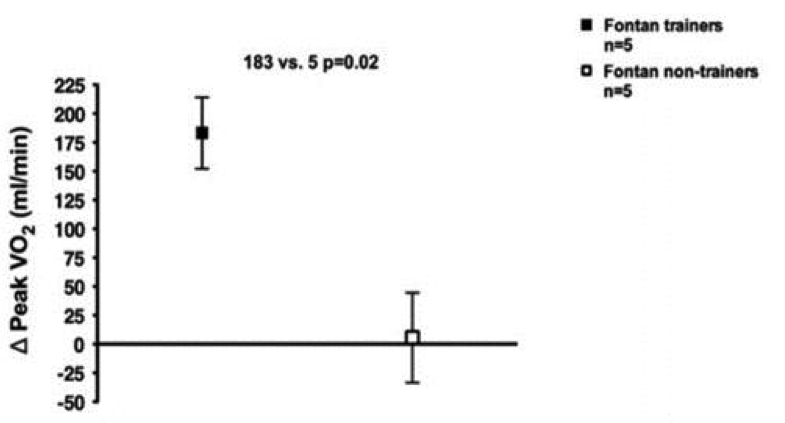Resistance training can give you many benefits, including:
- improved balance.
- a healthy state of mind. Resistance training can reduce depression and improve mood.
- improved body appearance. Resistance training can increase muscle and decrease fat.
- better sleep.
- better overall function
- Your daily activities will feel easier.
As you get older, you lose about 30% of your muscle mass. This means that your muscles lose strength and you become weaker. This loss of strength puts you at risk of:
- lowering your fitness level
- falling, breaking bones, or other injuries
Resistance training can help to reduce these risks. In fact, if you do resistance training 2-3 times per week, you can increase the strength of your muscles and increase your fitness level.
Resistance Training and Congenital Heart Disease
Resistance training is an essential part of physical activity, and a comprehensive exercise program should include specific sessions of resistance training. No matter your underlying heart condition, resistance training is safe and beneficial. In people with congenital heart disease intensity adaptations might be required by a cardiologist or a cardiovascular rehabilitation team.
Doing regular resistance exercise will increase or maintain your muscle mass and strength, which are important for your daily activities. Maintaining a good muscle mass has been related to a better and faster recovery after infections or surgical interventions, two situations that people with congenital heart disease often face during their life.
In a recently published study including almost 200 individuals with congenital heart disease, researchers found that people with congenital heart disease have less muscle mass compared to the general population independently of their diet. In the same study, researchers decided to evaluate the effect on the muscle mass of resistance training combined with an appropriate diet compared to the effect of diet alone. Patients were separated into two groups following different strategies: (A) 2 months resistance training program with a protein supplement, and (B) a protein supplement only. After the program, people in the resistance training arm had significantly increased their muscle mass and decreased body fat. No significant change was measured among people in group B (protein supplement only).
Resistance training is important to develop and maintain a good muscle mass with all the above-mentioned benefits that this has.
Resistance training in Fontan circulation. What do we know?
Among people with congenital heart disease, recent data show that individuals with a Fontan circulation are one of the groups with less muscle mass. There might be some explanations for that: previous restrictions regarding physical activity, and cardiovascular limitation to exercise. However, recent studies have shown the benefits of resistance training specifically for Fontan physiology. Not having a pumping heart chamber that helps blood through the lungs, muscle mass could provide significant help. >>> Learn more about Fontan Circulation (link to how my heart works)
Dr. Cordina’s investigation has focused on the effects of exercise in Fontan circulation.
One of her studies showed that after a 20-weeks of the resistance training program, young adults with a Fontan circulation were able to improve their overall exercise capacity as measured by peak oxygen uptake (VO2) in a cardiopulmonary exercise test compared to other young adults with Fontan circulation who did not follow the program (Figure 1). An increase in their muscle mass and strength was also noted.
The potential explanation of the effect of resistance training on exercise capacity and not only in strength and muscle mass would be that in Fontan circulation muscle contraction could help squeeze the blood from the legs back to the lungs, what we called the muscle pump. Increased inspiration and expiration during exercise can also help the flow of blood from the body to the lungs thanks to changes in pressure through the breathing cycle that creates a suction system during inspiration and a pushing force with exhalation.

Figure 1. Change in peak VO2 after resistance training versus non-training controls. Abbreviations: VO2 oxygen uptake. (Cordina RL et al. Resistance training improves cardiac output, exercise capacity and tolerance to positive airway pressure in Fontan physiology. Int J Cardiol. 2013 Sep 30;168(2):780-8.)
F.I.T.T. for Resistance Training
The FITT principle used to design your aerobic training program is also used to design your resistance training program.
FITT stands for:
- Frequency, or how often you exercise.
- Intensity, or how hard you work.
- Type, or what exercises you do.
- Time, or how long you exercise for.
Remember these resistance training terms:
Repetition: 1 performance of an exercise
Example: doing 1 bicep curl
Set: A specific number of repetitions
Example: doing 1 set of 10 bicep curls
Circuit: A series of exercises
Example: doing 1 set of 10 repetitions for 10 exercises
Important Tips for Your Resistance Training Routine
- Warm-up before doing the exercises. A good warm-up is usually 5-10 minutes of light intensity aerobic exercises (at the gym use cardio equipment, at home following a routine of jogging on the spot, jumping jacks, knees-up)
- Use the proper technique to do the exercises.
- Do not hold your breath.
- Do not let your Rate for Perceived Exertion (RPE) scale go over 16.
- Take at least a 30-second rest between sets.
- Cool down and stretch after the session.
Muscle Soreness and Stiffness
Soreness and stiffness in your muscles are normal when you start resistance training. It may happen several hours after you do the exercises. It can last up to 3 - 4 days.
Stop all resistance training if the soreness or stiffness lasts longer than 3 -4 days. This may be a sign that you have lifted too much weight or used incorrect techniques. Talk to your doctor or cardiovascular prevention and rehabilitation team before doing more.
Frequency
Do your resistance training 2-3 times per week.
Take at least 1 day to recover between resistance training days unless your rehabilitation team doesn’t tell you otherwise.
Intensity
When doing resistance training:
- You should be breathing comfortably. Do not hold your breath! Holding your breath can increase your blood pressure during exercise.
- Avoid lifting a weight that is so heavy that you need to strain and hold your breath to lift it. Use a lighter weight if you cannot lift a weight without holding your breath.
- Follow a resistance training program set out by your cardiovascular prevention and rehabilitation team.
- It is important to lift the right amount of weight for you to get the best results. Use the rating of the perceived exertion scale (RPE) below to help guide you. Your last repetition in your set of exercises should feel like a rating of 11-16 on the RPE scale.
Do not exercise with symptoms such as:
• chest pain
• shortness of breath
• palpitations
• dizziness
• body aches and pains
If you feel any of these symptoms, tell your cardiovascular prevention and rehabilitation team so they can help to adjust your exercise intensity.
For resistance training, your RPE should be between 11 and 16. This is how you should feel when you complete the last repetition of your set.
Time
Once you work up to three sets of 10-15 repetitions of each exercise, it will likely take you about 20-30 minutes to complete your program.
Type
There are many different exercises to improve the strength and endurance of your muscles. Your cardiovascular prevention and rehabilitation team may recommend 7 to 10 different exercises that are safe and will work for all your major muscle groups. These exercises can be modified if needed so that you are comfortable and safe.
These exercises can be done with different types of equipment such as:
- handheld weights
- resistance bands or tube
- exercise machines
- your body weights
Stretching
Stretching exercises are sometimes referred to as warm-up or cool-down exercises. Do not confuse stretching exercises with your cardiovascular warm-up and cool-down exercises.
Stretching your muscles (flexibility training) is an important part of staying fit. Stretching improves the flexibility of your muscles and reduces the risk of injury when doing aerobics and resistance training.
Static stretching involves holding a position for a period. It is important to do at least 5 minutes of cardiovascular warm-up before stretching a muscle. A good time to stretch is after your aerobic training when your muscles are already warm. Learn what to do for a cardiovascular warm-up »
How Do I Stretch?
To do a static stretch, stretch to the farthest point you comfortably can. You should feel tightness, but the stretch should not cause pain or discomfort in the muscle. Hold the stretch while continuing to breathe for 15-30 seconds.
Remember not to bounce or change position while you are holding the stretch.
Important:
- Do 5-10 minutes of warm-up before you start training.
- Perform exercises slowly and breathe normally. Lift weight while counting to 2 and lower to a count of 3
- Stretch after you finish training.
- Do resistance training 2-3 times per week, with at least one day of rest in between workouts unless your rehabilitation team does not tell you otherwise.
- Take a 30 - 60 second rest between sets.
- Stop exercising for the day if you get any symptoms (such as chest pain, irregular heartbeats, feeling dizzy, shortness of breath, or muscle or joint pain).
